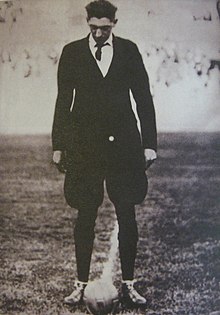1929 - 1930 - ESTADIO CENTENARIO - MONTEVIDEO, URUGUAY.
Estadio Centenario is a stadium in the Parque Batlle neighborhood of Montevideo, Uruguay, used primarily for football. The stadium was built between 1929 and 1930 to host the 1930 FIFA World Cup, as well as to commemorate the centennial of Uruguay's first constitution. It is listed by FIFA as one of the football world's classic stadiums, along with the likes of the Maracanã, old Wembley Stadium, the San Siro, the Estadio Azteca and Santiago Bernabéu Stadium. On July 18, 1983, it was declared by FIFA as the only historical monument of World Football, the only building of its kind (worldwide).
Estadio Centenario is the primary home of the Uruguay national team. Uruguay has always been a threat when playing in their home stadium, consistently beating top teams. Even the top ranked Brazil national football team has only managed three wins in 20 opportunities, although only one was an official match.
The construction of the Centenario is one of the most important stages in the development of sports in South America and international football. It was built especially for the organization of the 1930 FIFA World Cup, by immigrant workers in a record time of nine months. Its name originates from the celebration of 100 years of the ratification of the first Constitution of Uruguay.
Initially, all World Cup matches were to be played in the Centenario. However, heavy rains in Montevideo delayed construction of the stadium, so that several matches had to be played in the Pocitos Stadium of Club Atlético Peñarol, and the Parque Central of Club Nacional de Football. It was inaugurated on July 18, 1930, in the match between Uruguay and Peru, with the Celeste gaining victory 1–0, with a goal by Hector "Manco" Castro.
The final match of the inaugural World Cup matched Uruguay and Argentina, with Uruguay winning 4–2. Since then, the Centenario has been the scene of Copa America (1942, 1956, 1967, 1995), two South American Youth Championship(1979, 2003), a South American Under-17 Football Championship (1999) and 1980 Mundialito.
Aside from the Uruguay national team, any football club can rent the stadium for its home games. Peñarol has done that for nearly every game in the past years, while Nacional rents it for some international games.[9] In the case of other Uruguayan teams, they often decide to play there against both Peñarol and Nacional.
The stadium has four Grandstand separated by four lanes. The main one is the Olympic Tribune (and lower Platea known as Olympic), which is named so because the team had won two Olympic championships in a row (1924 and 1928). This has a maximum capacity of 21,648 spectators located in the three rings and the audience. Then there are the "popular", so called because they are sold cheaper, these are: theColombes, in honor of the Colombes, France in which the national team became Olympic champions 1924 and Amsterdam, because it was where the Celeste were crowned Olympic champions for the second time in 1928. The Grandstand Colombes accommodates 13,914 spectators while the Amsterdam accommodates 13,923.The America Tribune is parallel to the Olympic one. There are also "VIP" boxes and press boxes with room for 1,882 spectators, as well as the platform has room for 2,911 spectators, and additionally the grandstand has room for 5,957 people.
Under the Olympic Grandstand are located primary school "Nº 100 Héctor Fígoli"; and the Museum of Uruguayan Football. Under the Colombes Grandstand is located Police Station Nº9.
Copa de 1930: Se sorteó una semana antes del
Mundial
El sorteo del primer Mundial se
realizó el 7 de julio de 1930, una semana antes del comienzo del torneo: hubo
que esperar que llegaran en barco todas las delegaciones y las autoridades de
la FIFA. Hasta ese día, incluso, muchos aspectos de la organización estaban en
suspenso. El calendario de los partidos se aprobó dos días más tarde, teniendo
en cuenta las obras del Estadio Centenario.
El Comité Organizador decidió que hubiera cuatro series, con sus respectivas
cabezas: Uruguay, Argentina, Brasil y una compartida entre Estados Unidos y
Paraguay, porque no había elementos para determinar el potencial de esos
equipos. Como los participantes eran 13, hubo un grupo de cuatro equipos y tres
de tres. Uno de estos fue el de Uruguay, Perú y Rumania.












